Don't call it Pilates. Inside the exercise trend that's like 'if Pilates and bodybuilding had a baby'
Published in Health & Fitness
LOS ANGELES — Sebastien Lagree would like to make one thing clear: "This. Is. Not. Pilates."
The global fitness entrepreneur is talking about the Lagree Method, his patented workout. You may be familiar: About 50 SoCal studios currently license rights to use Lagree equipment, many of which are in Los Angeles. Their door shingles boast his name: There's Lagree 213 in downtown L.A., Lab Lagree in Glendale and Live Lagree in Brentwood, to name a few. Peer into their windows and you'll see machines that look like hulking, extra-large Pilates Reformers — so-called Megaformers — atop which L.A.'s fittest are moving between platforms on a modular, sliding carriage, positioning their body parts just so to execute slow but extra-strenuous squats, rows and lunges.
So, like, harder Pilates, yes? No.
"It's totally different," Lagree says on the phone from Shanghai, where he's meeting with fitness studios and manufacturers of his machines. "Not Pilates. That's a misconception I've been trying to fight for the past 25 years."
To set the record straight, Lagree is eager to go back to the beginning.
With his chiseled jaw, sonorous voice and bodybuilder's frame, Lagree could be the love child of Arnold Schwarzenegger and Fabio Lanzoni. He grew up in Paris and, after earning a master's in business from Seattle University, he moved to Los Angeles in 1998 to become — what else? — an actor. To support himself, he worked as — what else? — a personal trainer at a West Hollywood gym. His preferred mode of exercise was bodybuilding, but his work had him teaching Pilates on the Reformer, an exercise that was new to him.
After sessions, he says, clients would often want to do more cardio. "Because they didn't feel like they got a workout doing Pilates. I said 'Is it OK if I modify the method?' Because they're not feeling anything."
Lagree added hand weights and incorporated compound gym movements like push-ups, squats, lunges and planks on the Reformer. Eventually, he bought four Pilates Reformers and began teaching out of his living room. He'd been in L.A. just three years at this point, but many of his students were Hollywood makeup artists, stylists and private chefs to the stars and word got out. Soon celebrities were showing up to his home studio. David Schwimmer, Gabrielle Reece, Molly Sims and Elizabeth Hurley all visited his West Hollywood apartment before he got kicked out.
"I didn't have a license. It was all underground," Lagree says.
In 2003, he opened his first commercial studio on Melrose Avenue — he called it Pilates Plus — but says the Pilates machines "couldn't handle the workout I teach." He decided to design his own supersized version of a Pilates Reformer, and in 2005, the Proformer was born. It had added cables as well as platforms and foot bars on either end, allowing users to target different muscle groups such as the chest, triceps and shoulders.
"People just loved the Proformer," Lagree says. "We got inquires to open studios, so I decided to license out the system. And it took off from there."
But Lagree soon felt the need to distance himself, altogether, from any association with Pilates.
"In 2008 I changed the name because 'Pilates' was misleading — it wasn't that."
The Megaformer debuted in 2010. Whereas the Proformer was a hunk of steel that weighed nearly 500 pounds, the original Megaformer was 200 pounds lighter and came shipped in two parts, so it traveled easier. The design was simplified too, with a narrower carriage that had holes on the rear edge, providing better stability as well as varying grip points. The foot bar was redesigned into split handle bars, allowing for even more versatile exercise.
"The split handle bars, it allows you to do so many more movements," Lagree says. "It changed the game."
Over the next decade, demand for the Megaformer became so intense that the sole California manufacturer couldn't make the machines fast enough. In 2019, the Lagree Method was named the fastest-growing fitness trend in the U.S. by the exercise-booking app ClassPass. By 2023, exacerbated by post-pandemic supply chain issues, there was an 18-month wait to receive a machine. Lagree has since moved the manufacturing operations to China and Vietnam, reducing the back-ordering windows.
Lagree experiments constantly, tweaking his exercise method and machines. He says he has amassed 200 patents. In addition to the original Proformer, there's also been the EVO and EVO II, the Supra, the Miniformer and Miniformer Pro, the Microformer and Microformer Pro — the last four meant to maximize space.
The Megaformer, too, has gone through about a dozen iterations, a dizzying alphabet scramble that includes the M1, M2, M2S, M3, M3S, M3K, M3K+, M3X, M3E, M3. Each features design tweaks. A change in spring location in one model, for example, allows users to transition between exercises faster; more holes in the platform or carriage of another model allow users more anchor points to grip while exercising.
"The machines evolve with the method to further distinguish us from Pilates," says the company's community relations director and senior master trainer, Heather Perren. "Lagree is a science-backed method, a live method."
Through it all, the Megaformer has remained the star of the enterprise, a behemoth at the center of the most intense non-Pilates, Pilates-adjacent exercise out there. How different, really, is it from a Pilates Reformer?
Both machines use carriages and spring tension — the springs are easier on the body's connective tissue, making exercise low-impact. But that's largely where the similarities end. Pilates, which was invented for rehabilitative purposes and which focuses on core strength, flexibility and balance, is generally low-intensity; the Lagree Method is high-intensity. It combines strength training, cardiovascular exercise and muscular endurance, with exercises performed at a very slow tempo, so muscles experience more time under tension. Many of the exercises are done kneeling or standing up. It's not unusual to see participants sweating and huffing, their limbs trembling, at the end of a set.
"It's like if Pilates and bodybuilding had a baby," says Natalie Grimsley, owner of Plankhaus in Santa Monica, which teaches the Lagree Method as well as mindfulness workshops.
I stopped by Lagree's West Hollywood studio on a recent afternoon and was struck by the size of the Megaformer. It's a massive contraption, like a Pilates Reformer on steroids. It's more than 10 feet long and weighs 395 pounds (by comparison, the more petite Pilates Reformer generally weighs up to 150 pounds.) The carriage's panels are numbered, so you can precisely position your feet and hands to execute exercises correctly. Place your knees on 0 and your hands on 1 and 3, for example. Now you're in the proper alignment to do a modified plank.
A bit intimidating? Yes. But I gave the workout my best shot. Still, it was so intense at points, I did not make it through the entire 50-minute session. Deep house music filled the room, which was dimly lit and bathed in lavender light. About 20 women, many of whom looked like aspiring actors, knelt on the numbered panels, while hinging at the waist and pulling a cable to execute a tricep press. They moved surprisingly slowly and deliberately, and the exercise got increasingly difficult. We'd been forewarned: A red neon sign by the bathroom glowed "It's Not Pilates It's Lagree."
"Sliiiiide, ignite your core, use your butt cheeks," instructor Sam Rabon said. "Slower, deeper, a little more intention!"
"It's a total package, very effective," Rabon told me after class. "We were standing up a lot — definitely not Pilates."
Two days later, my thighs and glutes still ache.
Lagree now has four of his own studios in L.A., in West Hollywood, Brentwood, Studio City and Santa Monica, and one in Miami. Seven hundred licensed studios — in 45 countries — pay $3,990 annually to use the Megaformer and teach the method (that doesn't include the cost of buying or leasing the machine).
"But there are so many copycats out there who don't want to pay for the license," Lagree says. "They buy copycat machines that don't work as well and call it Pilates. 'Oh, it's Pilates, but more intense.' That's where the confusion is coming from, the people in the gray area."
It's not like Lagree hates the P-word — he thinks Pilates is valuable, especially for restorative purposes.
"I've always promoted the benefits of Pilates," he says. "I tell people you'll get the best results if you mix and match Pilates and Lagree."
Then he sighs heavily, adding: "They're just different — we're not Pilates."
©2025 Los Angeles Times. Visit at latimes.com. Distributed by Tribune Content Agency, LLC.
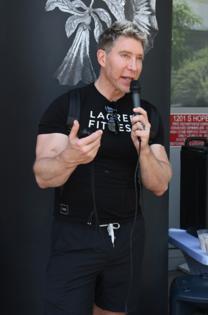
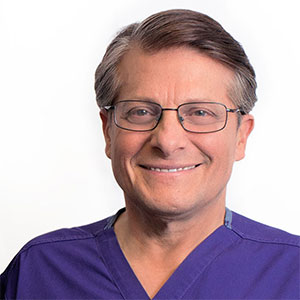

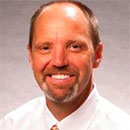
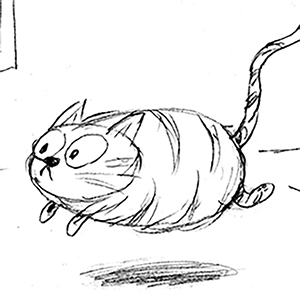



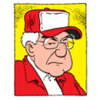
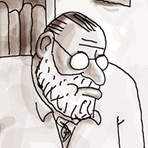
Comments